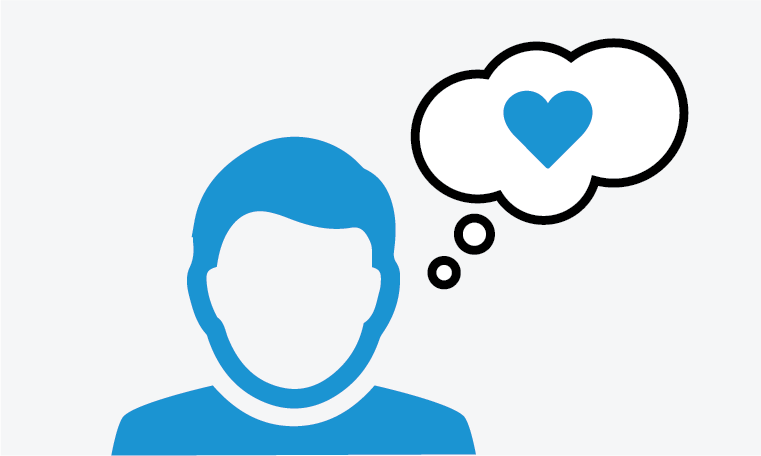Have you ever called customer service, navigated a confusing website, or wrestled with a product that just wouldn’t work right?
Let me tell you, as someone who’s been in the customer experience trenches for years, those moments can be incredibly frustrating.
That’s where the Customer Effort Score (CES) comes in.
It’s a powerful metric that goes beyond simple satisfaction to truly understand how easy (or difficult) it is for your customers to get things done.
In this blog post, we’ll delve into the world of CES, exploring how to measure it effectively, what a good score looks like, and how to use this data to create a smoother, more effortless experience for your customers.
Let’s get started.
What Is a Customer Effort Score (CES)?
Customer Effort Score (CES) is a metric used to gauge how much effort a customer must exert to interact with a company, resolve issues, or complete purchases. CES is measured through surveys asking customers to rate their ease of experience on a scale, typically from 1 to 7.
A low customer effort score indicates a seamless experience, while a high CES suggests friction.
CES is the measure of ease of customer interaction. Instead of asking how satisfied the customers are, you ask them to gauge the ease of their service experience to find the friction points and eliminate bottlenecks on the path to the best customer experience.
The CES survey features a rating scale or Likert scale where you ask the respondents to rate their ease of issue resolution. You can also add follow-up questions to collect more in-depth data.
For example:
How much do you agree with the following statement – Qualaroo made it easy for me to solve my issue.
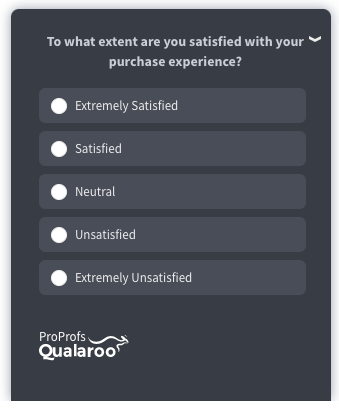
How Can You Measure Customer Effort?
Customer effort is defined as customers’ interactions with your services, like customer support or technical department. It’s the number of steps they’ve to take to complete their desired actions. It can be anything like:
- Post-purchase services
- Getting in touch with the support agent
- Finding the contact information on the website or app
- Getting issues resolved with customer support
- Interacting via live chat to get their queries answered
High-effort interactions that require more time and struggle from customers are more vulnerable to abandonment in today’s competitive environment. That’s why it’s necessary to deliver a low-effort experience to your website visitors and customers.
But how can you measure the intensity of an interaction?
To measure customer effort, you need to map the customer journey to uncover touchpoints where they struggle and contact your customer success team. You can then deploy surveys to collect CES scores and other valuable feedback data.
CES or Customer Effort Score is one of the most popular metrics to get quantitative and qualitative insights into customers’ efforts and improve their experience.
Watch: Steps to building effective surveys
Importance of Customer Effort Score (CES) Surveys
According to Gartner, reducing customer efforts is key to lowering disloyalty. CES’s importance lies in understanding customers’ efforts, and their feedback regarding pain points can help you deliver a low-effort experience. This translates to better conversions, retention, and brand loyalty.
1. Provides Insights About Your Support Services
CES enlightens you about how frictionless your support services are. You can use the data to optimize the existing service channels, install new service points and reduce unnecessary steps that hinder an excellent customer service experience.
2. Promotes Customer Retention and Loyalty
According to Gartner, customer effort is 40% more accurate at predicting customer loyalty as opposed to customer satisfaction.
The same is indicated by an HBR study, which shows that this score has a better predictive power of repurchase than NPS and CSAT.
A low-effort service is an incentive in itself for the customer to come back again.
Therefore, using CES as a progress indicator and improving it over time can help you retain more customers.
3. Reduces Service Costs and Efforts
If customers expend less effort to get their issues resolved, the lesser is the burden on your support staff, and hence lower is the resource cost.
A low-effort experience may reduce repeat calls by 40%, thereby saving service resources and time.
Since tis score is the direct measure of the customers’ struggles, it can guide you towards the areas of improvement to provide quick resolution.
4. Promotes Positive Word of Mouth
According to Gartner, ‘the NPS score of companies providing a low effort experience to customers is 65 points higher than the high effort companies.’
What does this mean?
It means the customers who get their issues resolved quickly or can effortlessly use your product, website, etc., are more likely to promote your brand or company to others. It can be positive reviews, word of mouth, product shares, and more.
Thus, a good CES score can improve your brand’s popularity and promote damage control by limiting the bad word of mouth about your products and services.
Top 4 Advantages of Measuring Customer Effort Score (CES)
Here are some benefits of implementing CES in your business:
1. Qualifies the Service Experience
One of the biggest advantages of using customer effort score surveys is quantifying the service experience. You can sum up the entire conversation into a single-digit number that reflects how the customer feels about the interaction.
We know it can’t replace the actual feedback insights you can gather from free-text responses in your CES surveys. But the numerical CES score provides a starting point for where to look. You can prioritize the bad scores first to resolve customers’ issues.
2. Consolidated View of Support Services’ Efficacy
Considering the number of touchpoints customers can use to contact support services, it’s a mammoth task to track each of them individually.
Factor in the effort to analyze the feedback and transcript of each chat call, mail, and text — and boom, you’ve got a problem!
Imagine getting swamped with tons of messages while unsatisfied customers leave your services for better shores.
That’s where the CES survey comes into play. It can help you gauge how different touchpoints are performing.
You can create your customer effort score(CES) benchmarks using the data from multiple touchpoints and then compare each.
It gives the freedom to see the service experience as a whole or segregate it into different channels to get more nuanced insights.
2. Reduce the Friction Points
With the response data from your customer effort score questions, you can spot the points where customers struggle the most. Then, integrate these insights into your optimization strategy to optimize the service experience.
It can be a simple issue like long waiting queues, which can be solved by adding more support agents or self-help options.
Or it can be a serious issue with TATs or support quality.
Whatever it is, such surveys can point you towards it so you can create an effortless experience.
FREE. All Features. FOREVER!
Try our Forever FREE account with all premium features!
Origin of Customer Effort Score: Who Designed the CES Survey
In 2010, CEB, now Gartner, set out to find the correlation between customer service and loyalty.
They researched over 97,000 customers who have interacted with customer service representatives and hundreds of customer service organizations to find answers to three critical questions:
- To what extent does customer service matter in driving customer loyalty?
- What can customer service do to drive customer loyalty?
- How can customer service improve loyalty while also reducing operating costs?
The findings showed that exceptional customer service had only a marginal effect on customer loyalty. However, reducing their efforts is a crucial factor to predict loyalty and reduce service costs. CEB introduced CES to measure the customer efforts expended to find the solution.
The CES 1.0 was initially measured with the question: “How much effort did you personally have to put forth to handle your request?” It’s scored on a scale from 1 (very low effort) to 5 (very high effort) as shown in the figure:
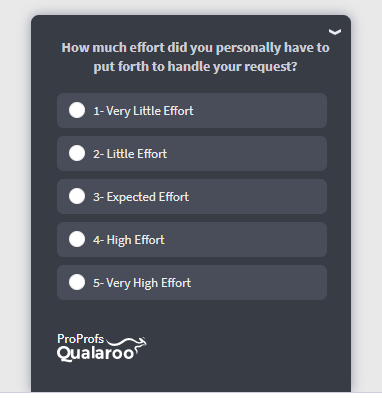
The problem with this formulation?
The word “effort” can be interpreted differently in different languages, making it the customers’ responsibility to interpret it the right way.
So, a couple of years later, CEB proposed a new formulation, CES 2.0, with two more response anchors added to the previous scale.
For example:
‘To what extent do you agree or disagree with the following statement: The (company name) made it easy for me to handle the issue?’
- Strongly Disagree
- Disagree
- Somewhat Disagree
- Neither Agree nor Disagree
- Somewhat Agree
- Agree
- Strongly Agree
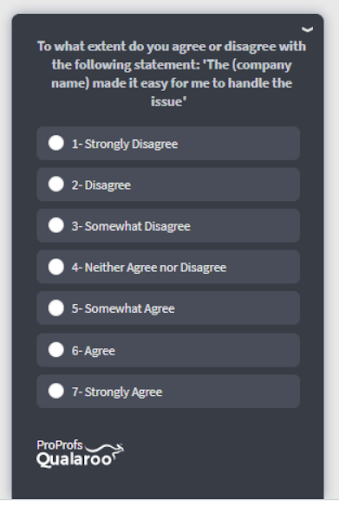
3 Types of Customer Effort Score (CES) Benchmarks
Benchmarking lets you see where you stand in the customer service experience game. But what kind of benchmarks can you use?
There are practically three types of customer effort score (CES) benchmarking to fiddle with and improve, namely:
1. Internal CES Benchmarking
A self-hosted CES benchmarking system compares the current customer effort scores with past trends.
Since the data sets are comprised of previous scores, this standard does not look for data from other industries or competitors. It’s beneficial to track the changes in the scores over time.
2. Competitive CES Benchmarking
In competitive benchmarking, such scores of a particular period are compared against your direct competitors.
The practical use of such a system?
Running a competitive analysis and finding out what similar brands are doing to maintain an exceptionally good CES score.
3. Industry Standard CES Benchmarking
Industry Standard or Global CES benchmarking is defined as measuring your customer support services against global standards in your industry.
For example, if you manage a hotel, you would want to know how big hotel chains in the world manage their customer service interactions and how you can do the same or even better.
These CES reports are readily available from different sources, or you can also hire professional help to research and help you create a Global CES benchmark for your business.
Measuring Customer Effort Score (CES): 5 Types of CES Scales
When it comes to measuring CES, different scales can be used to collect different data types from customers. Generally, the respondents are asked to agree or disagree with the statement using a Likert scale or rate their effort level on a numbered scale.
Each scale can have its variations depending on the measurement sensitivity you require from the customer.
For example:
A 7-point Likert scale is more sensitive than a 5-point scale as it provides more options for customers to represent the level of effort they expend to get their issues resolved.
1. Likert Scales for CES Surveys
The Likert scale metric assesses the respondents’ opinions and behaviors using a 5 or 7-point unidimensional response scale. The responses are called response anchors and arranged on a continuum from ‘strongly agree’ to ‘strongly disagree’ or vice-versa.
The responses measure the intensity of respondents’ agreement or disagreement with the given statement. In addition to measuring statements of agreement, the Likert scale can measure other variations such as frequency, priority, likelihood, quality, and importance.
- 5-Point Likert Scale:
On a 5-point Likert scale, the respondents can choose from 5 response anchors in the options. The answers are usually numbered 1-5 and can be color-coded from red to green for clarity.
For example:
How satisfied or dissatisfied are you with our customer service representative?
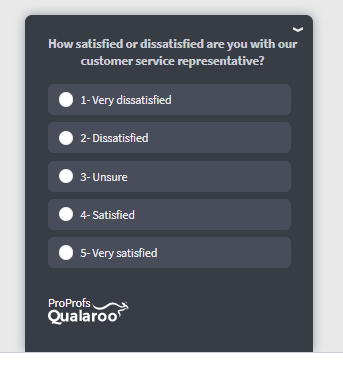
- 7-Point Likert Scale:
You can use the same question with a 7-point Likert scale having seven response anchors. The 7-point scale can give deeper insights as the respondents have more options. However, increasing the number of options can make it more difficult for the respondents to choose the answer.
For example:
How satisfied or dissatisfied are you with our customer service representative?
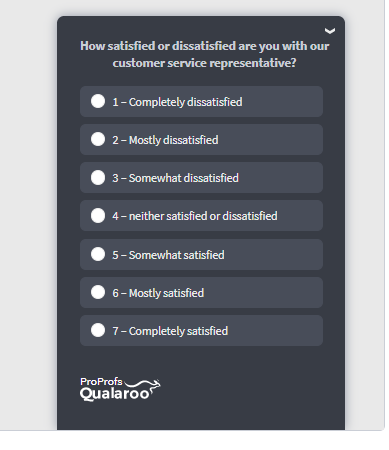
2. Numbered Rating Scale
This metric asks the respondents to rate their experiences on a scale of 1-10 or 1-5. Generally, higher scores indicate low effort (very easy) or positive experience, and lower scores reflect high effort (very hard) or negative experience. However, the sentiment can also be reversed depending on the context of the statement.
This scale can also be color-coded from red to green to associate the color with the negative to the positive experience and provide clarity to the respondents.
- 1-5 Rating Scale
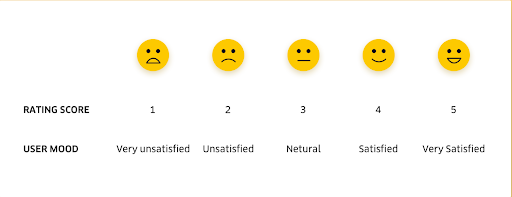
- 1-10 Rating Scale

3. Emoticon Ratings
Relatively simple to understand and takes little to no effort to answer, you can use the emoticons to run small CES surveys on your website or app. It consists of smiley faces ranging from unhappy to delighted emoji on a linear scale with a neutral face in the middle.

12 Customer Effort Score Survey Questions to Use in 2025
To build effortless customer service, you need reliable customer insights from a targeted customer effort score survey. And to build a CES survey, you need focused questions.
This is what we have for you- professionally designed CES survey questions that we use even at our end:
- Based on your experience with our support representative today, how likely are you to recommend the services to your friends and family?
- How easy or hard was it to get your queries resolved?
- Please rate your overall experience with our support staff.
- On a scale of 0-10, how satisfied are you with our customer service representative’s performance?
- Please rate our support staff on the following aspects – product knowledge, speed, and behavior.
- How helpful was our service representative in resolving your issue?
- How can we improve our customer service experience further?
- Do you have any other suggestions?
- On a scale of 1-10, how would you rate the quality of our customer support team?
- How easy was it to contact our support agent?
- Was the service agent knowledgeable about your issue?
- What was the most frustrating aspect of your customer service experience with us?
Now that you have the CES question library, Here’s how to maximize the ROI on your CES survey using these questions:
- Start with a basic rating question like a numbered scale or Likert scale
- Use the Skip logic in your survey tool to add an open-ended question based on the respondent’s answer.
- You can then add 1-2 more questions to explore more data from the respondents.
Remember to keep the CES survey short and to the point, especially if it targets an unsatisfied customer.
Read More: What Survey Questions Should I Ask?
FREE. All Features. FOREVER!
Try our Forever FREE account with all premium features!
CES vs. NPS vs. CSAT? Is CES Better?
Although CES, NPS, and CSAT are all customer experience metrics, they measure different aspects of customer experience.
NPS Score
NPS (Net promoter Score) measures the likelihood of customer recommendation of your brand. The respondents are asked to rate the question on a scale of 0-10. The responses are categorized into detractors (0 to 6), passive (7-8), and promoters (9-10).
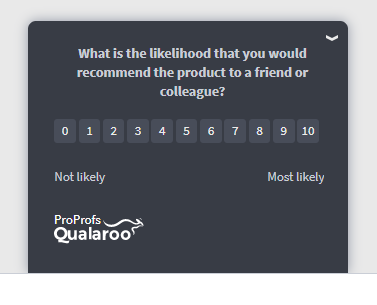
The NPS score is calculated by subtracting the percentage of detractors from the percentage of promoters.
For example:
Let’s say the total survey respondents are 10. Out of these, 2 (20%) are segmented as detractors, 7 (70%) are promoters, and 1 (10%) is passive.
Then, the NPS score = promoter percentage (70) – detractor percentage (20) = 50
It’s easy to interpret and gives an accurate measure of long-term brand loyalty. However, since the score is calculated by subtraction, you can get the same score from the two different sets of promoter and detractor percentages. For example, an NPS score of 50 can be obtained from (70-20) and (60-10).
NPS is a high-level metric to evaluate the overall customer experience but does not consider the experience at specific touchpoints. That’s where CSAT and CES come in.
Watch: How to Create Net Promoter Score Survey with Qualaroo
CSAT (Customer satisfaction) Score
CSAT Score measures customers’ satisfaction after their interaction with a specific touchpoint or service. The respondents are asked to rate their satisfaction level on a Likert or Rating scale.
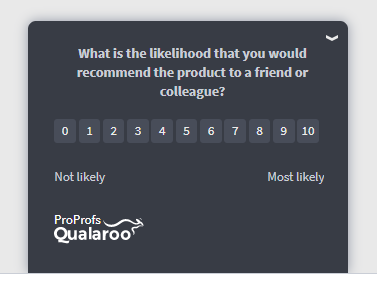
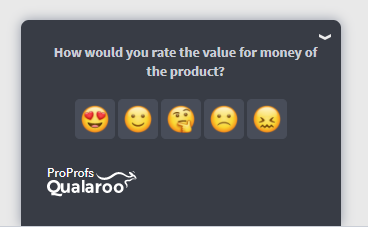
However, it does not take previous interactions into account.
Also, since CSAT is a short-term metric, it may not be an accurate indicator of customer loyalty. The customer can be satisfied with one aspect of the services but may not be happy with other elements.
How Do NPS and CSAT Compare With CES?
Before choosing between NPS, CES, and CSAT, the first thing to consider is whether you want to measure the overall customer relationship health or get feedback on a recent experience or touchpoint.
Net Promoter Score gives the whole picture of customer loyalty and relationship on a long-term basis. On the other hand, CES and CSAT are transactional metrics that evaluate crucial touchpoints in the customer’s journey.
Interestingly, according to an HBR report, ‘CES outperforms both NPS and CSAT in predicting both customers’ repurchase and spending intent.’
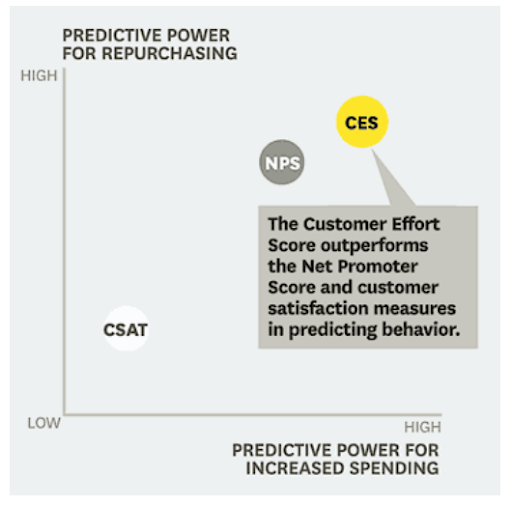
Courtesy HBR
Similarly, Gartner’s report shows that the NPS score of companies that emphasize low-effort experience (thus high CES) is generally 65 points higher than the high-effort companies. The facts show that CES is better in predicting loyalty than NPS and CSAT.
Does this mean that you should use only CES?
Absolutely not.
Each metric has its significance when it comes to improving customer experience. NPS is useful in segmenting the customer to help you identify the promotional and follow-up targets.
On the other hand, CES can help you figure out the bottleneck preventing the customer from having a seamless and effortless experience.
6 Best Practices & Tips to Design Great CES Campaigns
1. Timing Is Pivotal to Collect the Data
Choosing when to show the survey is critical to increase the response rate and get insightful feedback. That’s why Qualaroo’s surveys, seamlessly integrated into the user experience, achieve a 10-30% response rate.
For example:
- You can display or send the CES survey immediately after they’ve contacted customer support.
- Ask for CES immediately after resolving customer’s issues over call or chat.
- Send an email survey to collect CES 6-24 hours after closing the service request.
2. Choose Your Touchpoints
The more channels you choose to send out the CES survey, the higher is the response rate and the more data you can collect from the respondents. You can send the CES surveys through emails, SMS, and shareable links.
Another way to get instantaneous feedback is to add the CES survey to your website, app, or product; at the point where you wish to collect the user feedback. In this way, the survey will automatically pop up to the visitor or customers once they meet the preset conditions.
3. Choose the Right Scale
Choosing the correct scale makes all the difference in the outcome. Different scale types measure the customer’s efforts to different sensitivity.
For example, a 7-point Likert scale provides more response options to customers than a 5-point Likert scale, thus providing a better interpretation of customers’ expended efforts.
Similarly, the rating scale of 1-5 and 1-10 have different sensitivity as the latter gives more options for the customer to choose from.
What’s more, the sequence of scale response anchors will also determine how you read the scale.
If the response anchors range from negative to positive sentiment, a higher score will be desirable.
For example:
How easy or difficult was it to get help with your problem?
1 – Very difficult
2 – Difficult
3 – Neutral
4 – Easy
5 – Very easy
But if the scale anchors are reversed, the lower the score, the better.
For example:
How easy or difficult was it to get help with your problem?
1 – Very easy
2 – Easy
3 – Neutral
4 – Difficult
5 – Very difficult
That’s why it’s beneficial to choose the right scale and maintain its consistency to track progress precisely.
4. Ask the Right Questions
Asking the correct questions will help you to get precise answers. As CES surveys measure the customers’ efforts, make sure that you frame the questions in a way that represents their struggle or ease in getting the support to resolve the issue.
Also, try to use a neutral tone to avoid directing the respondents in a particular direction. One way to prevent a leading question is to pose it as a statement.
Lastly, avoid using the word ‘effort’ as it can be interpreted differently in different languages. Instead, you can rephrase the question to directly ask the respondents how easy it was to resolve the issue.
For example:
How easy or difficult is it to navigate our website?
1 – Very difficult
2 – Difficult
3 – Neutral
4 – Easy
5 – Very easy
For example:
How easy or difficult is it to navigate our website?
1 – Very difficult
2 – Difficult
3 – Neutral
4 – Easy
5 – Very easy
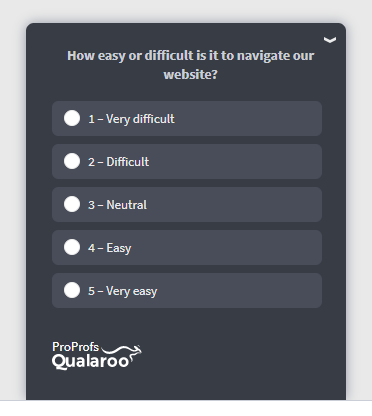
- Add Open-Ended and Follow-up Questions to CES Survey
Since the CES response anchors are divided into three sentiment types: unhappy, neutral, and happy, it’s perceptive to add a follow-up question to get deeper insights into the feedback. It will help you understand the issues and concerns so you can fix them in time.
You can also use question branching to redirect the respondents to different questions depending on their answers to personalize the survey.
- Track Your CES Score With Time
Tracking your CES score is crucial to measure the progress over time. Seeing improvements in the CES score is tangible proof that the changes you made are working. On the other hand, a decreasing CES score would let you quickly spot customer problems and rectify them.
This way, tracking the CES score will help you improve customer experience and reduce unnecessary efforts.
3 Customer Effort Score Use Cases: When to Send CES Survey
There are different points of service interactions you can target along the customer journey to collect the CES score, such as:
- After the Customer Uses the Help Section
67% of the Customers prefer a self-service system over contacting the support representative to solve the issues.
It means self-help resources are a vital touchpoint to measure and optimize customer effort. These include a knowledge base, guides, and Self-Help sections. You can add a simple CES survey Nudge™ to inquire about their experience.
For example:
- Were you able to find the information you were looking for?
- If Yes, To what extent do you agree or disagree with the following statement: [Company name] made it easy for me to find a solution to my issue.
- If No, what were you looking for?
- Is there anything we can do to improve the section further?
You can use targeting options to show the survey to different customers based on their behavior and actions.
For example:
- When the customer is about to leave the page or section.
- When they’ve browsed to a certain length of the page.
- When they interact with a page element like CTA or share button.
- After Interaction With Customer Support Service
According to Microsoft’s State of Global Customer Service Level report, ‘96% of the customers say that customer service plays an important role in deciding loyalty towards a brand.’
Thus, CES is an important metric to ensure a low-effort experience for the customers interacting with support services.
There can be two instances to collect CES data:
- First Interaction – how easy was it for you to connect with customer support?
- After the last exchange – how easy was it to get the problem resolved?
Follow up with the customers to measure your customer services’ effectiveness, make improvements so they can get their issues or queries answered as soon as possible, and reduce repeat calls or emails.
For example:
- How helpful did you find the customer service agent?
1 – Not at all helpful
2 – Slightly helpful
3 – Somewhat helpful
4 – Moderately helpful
5 – Extremely helpful
- How much effort did you personally have to put forth to handle your request?
- How did this effort compare to your expectations?
- To what extent do you agree with the following statement: The company made it easy for me to handle my issue.
- After Providing Help Through Live Chat
The difference between live chat and other means of communication is real-time resolution and feedback. Plus, the waiting time is usually lower than that on call.
After providing the resolution, you can show the CES survey in the live chat window and ask for real-time customer feedback.
It will help you measure the effectiveness of your support agent in resolving customer issues in real-time.
Even if you’ve automated chatbot support, you can measure how easy it’s to use it.
For example:
- Was the agent or chatbot able to help you with the issue?
- How easy is it to use the chat feature to resolve your query?
Interpreting the Results. How to Calculate the CES Score?
There’s no definitive industry standard for calculating the customer effort score. You can use one of the several methods to calculate and track it.
Method 1
The general formula used to calculate the CES score is to find the aggregate of all the responses.
(CES) Customer Effort Score = Sum of all Customer Effort Scores ÷ Total number of respondents.
For example:
- For the survey given below:
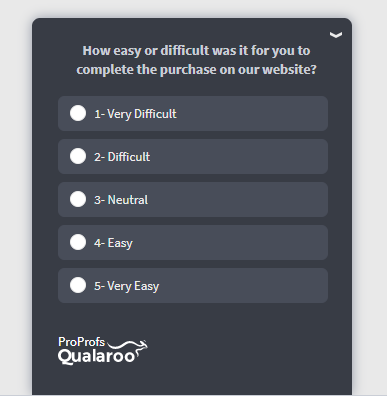
Suppose the individual responses are = 4, 2, 5, 3, 4, 1, 2, 4, 5
And the total number of total responses is = 9
Therefore CES = (4+2+5+3+4+1+2+4+5) / 9 = 3.3
To express the total score as an aggregate percentage, you can multiply it by 100. It provides an easy-to-read round number to use as a result.
Tip: Be cautious if you use a reversed scale, i.e., ranging from positive (low effort) to negative (high effort). The calculations will also get reversed. In this case, a lower score would be better, as shown in the image below:
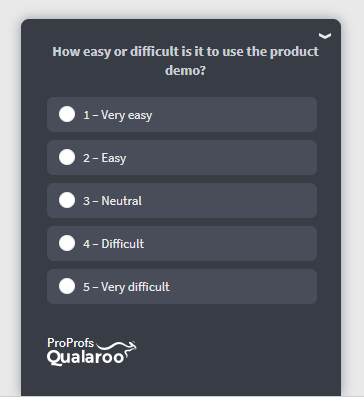
Method 2
Another alternative is to calculate the percentage of positive votes by dividing the number of people who chose ratings 4 or 5 by the total responses.
For example, if 58 customers out of 100 gave you a rating of 4-5 (4 or 5 being the positive response anchors), then your CES is 58. If you’re using a 7-point Likert scale, then the desirable responses would be 6-7 response anchors.
As with the above method, if you reverse the scales, you need to take the total number of 1-2 responses and divide it by the total number of respondents to get the CES score.
Now that you have the CES score, you need to track this number to see the fluctuations. It will help you measure the effectiveness of the changes you made to the product or process.
FREE. All Features. FOREVER!
Try our Forever FREE account with all premium features!
Disadvantages of Customer Effort Score (CES) as a Metric
With the good comes the bad, so here are some limitations and cons of the CES metric:
- Limited to Only Service-Based Interactions
Though better than NPS, this metric was specifically designed for customer service experience, which limits its usage to other aspects of the customer journey.
You have to manage and measure separate CX metrics for different touchpoints. It means you would need to extrapolate two different data types into one to create a single view of the entire customer journey.
- Hard to Benchmark the Data
Unlike NPS, the CES benchmarks are not readily available in the market. This makes customer effort score benchmarking difficult and cumbersome.
You can always create your own CES standards, but competitive benchmarking is important to compare your KPIs with industry standards.
What is a Good CES Score?
One thing you need to keep in mind is the sequence of your options. It will decide whether the score obtained in the last section is a positive or a negative indicator.
For example:
- If your options range from easy to difficult, such as
- Very easy
- Somewhat easy
- Neither
- Very difficult
- Extremely difficult
In this case, as the score shifts towards the left extremities, the better it’s for the survey. A CES score between 1-2 would be considered a good score.
However, if the options are ranged from hard to easy, such as
- 1 – Not at all helpful
- 2 – Slightly helpful
- 3 – Somewhat helpful
- 4 – Moderately helpful
- 5 – Extremely helpful
In this case, as the score moves towards the higher end of the spectrum, the better it’s.
So, use consistent options to get correct results and interpretations.
Also, it should be pointed out again that this metric is not an indicator of customer satisfaction. It measures the ease of interaction and customer effort level.
7 Proven Strategies To Improve Customer Effort Scores (CES)
Once you have the score in hand, the next step is to figure out ways to improve it. Here are some of the methods you can use to build a higher CES score over time.
1. Benchmark Your CES
The first step is to set a benchmark. A higher CES score is good, but how does it compare to your industry’s general CES scores for the same interaction?
Setting up a benchmark is pivotal to track your progress. There are multiple standards to benchmark your score.
- Competitive Benchmark: Tracking the CES progress against your competitors’ score to improve the customer experience. It’s one of the best standards as it considers your industry.
- Global Benchmarking: Comparing your scores against global scores. Note that the score will vary depending on the region and demographic. You may need to consider the score for the specific geography where you want to measure the progress.
- Compare against your own scores: When you can track the progress using your previous scores as the benchmark.
2. Improve First Time Resolution Rate
First contact resolution (FCR) is an important metric to generate happy customers and lower service costs. FCR is the support services’ ability to provide the customer with the resolution on the first contact via call, email, chat, etc.
A higher first-time resolution rate will improve your CES scores and save your support services resources and time. In fact, low-effort experience may reduce repeat calls by 40% and escalations by 50%.
3. Install Multi-Channel Communication Options
Another way to provide a low-effort experience to your customers and improve your scores is to make it easy for them to contact you. Some people prefer to call support services, while others prefer emails or live chat.
62% of customers want to communicate with companies via email for customer service. 48% want to use the phone, 42% live chat, and 36% “Contact Us” forms.
So you should provide multiple communication channels for the customers to get in touch with you via the medium they are most comfortable with. Use multi-channel contact/feedback options such as email, phone support, self-service Kiosk, Livechat, and contact us tab.
4. Use Self-Service Tools Such as Guides, Tutorials, & Videos
Your customer would rather solve the issues themselves instead of contacting you. And boosting self-service options such as knowledge base, user guides, video tutorials, etc., make it easier for the customers to get the answers for their issues and problems with your products or services.
Installing self-service tools does not undermine the importance of a multi-channel support environment for the customers. They should be able to quickly connect with you if they don’t find what they are looking for in the self-service channels.
Both points go hand in hand to provide a seamless customer experience and lower the efforts, thereby improving the score.
5. Read Between the Lines
Repeating themselves is one of the most frustrating experiences of the customers while contacting the support services. According to Hubspot, 33% are most frustrated by having to repeat themselves to multiple support reps.
It also causes hindrance in providing a low-effort customer experience. Therefore, it’s imperative to try to understand customers’ queries in the first go. If a customer cannot articulate their issues properly, it becomes essential to use context to understand the problem. Look into the customer’s information, activity history, and other data available to find the possible problem.
If the resolution cannot be provided in the first contact, the agent needs to log the customer’s conversation details for the next agent. You can also proactively inform the customers once the issue is resolved instead of waiting for them to contact you.
6. Lower the Wait Time
No one wants to wait on the phone to get in touch with the support agent. Longer wait times lead to frustrated customers, and if the query does not get resolved on the call, it ultimately constitutes a bad customer experience.
It could lead to a loss of a customer.
There are various ways to reduce wait-time:
- If you have a high call flow, employ more people to handle the calls.
- Make sure that sufficient staff is available during peak hours.
- Install a callback system, so customers don’t have to wait in the call queue.
- Install other mediums of communication, such as live chat and email.
Reducing wait time can be a crucial element to provide good customer service and increase your CES score.
7. Reduce the Response Time to Customers
Another critical metric to reduce customer efforts is the average response time. Around 65% of the customers believe that quick response is an important metric to improve their customer experience.
Respond to the customers quickly and focus on providing resolution on the first reply instead of multiple calls or conversation threads. One of the fastest mediums to engage the customers is through live chat. It offers real-time support for the customers and reduces the load on calls and emails.
The faster your response time is to the customer, the lower is the effort they need to put in to get their problems addressed and resolved.
Quick Tips to Kickstart Your CES Survey Program
Now that you know all about CES, how and when to use it, you’re ready to design CES surveys for your website, product, or app.
- The first step is to find out what interaction you wish to measure. It will help you find the right question to ask the customers.
- Use automated pop-ups, so the surveys are automatically displayed and sent out to the customers. It will increase data reliability and response rate.
- Since the CES survey measures customer efforts, the survey should be concise and relevant for low-effort interaction. Add open-ended follow-up questions to get more detailed information from customers.
- If you’re new to such surveys, you can also use pre-built templates offered by various survey tools.
- Take quick actions on the response to improve the scores.
FREE. All Features. FOREVER!
Try our Forever FREE account with all premium features!
Measure Your Customer Effort Score With Qualaroo
With all said and done, the importance of CES can’t be overstated enough. All that’s left is to start creating CES surveys to improve the overall customer experience.
And a good survey tool can help you start your service experience optimization campaign.
How?
Top-of-the-line survey tools like Qualaroo come with tons of features you can exploit to design targeted customer effort score questionnaires like survey templates, easy-to-use builder, and multi-channel reach.
Start with a simple 1-2 question survey you can send via mail to customers reaching out to your support team. Ask them to rate their experience and add a follow-up question to collect free-text feedback.
From there, you can expand it to your live chat widget, the onsite customer support page(helpdesk page), IVR, and other channels.
And don’t worry about data analysis!
If you are using advanced feedback tools like Qualaroo or Qualtrics, you can use their built-in AI-based engines to help you make sense of your data in no time.
So, start surveying to build an effortless customer service that reinforces your brand value with the right CES surveys.
 Tips
Tips
We’d love to hear your tips & suggestions on this article!
FREE. All Features. FOREVER!
Try our Forever FREE account with all premium features!

 We'd love your feedback!
We'd love your feedback! Thanks for your feedback!
Thanks for your feedback!


